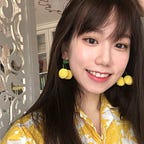Lesley Yan_51261_Project 2
Form and Composition
About Project II
Forms and compositions play an powerful role in communication design. Project II is an exploratory exercise to convey meanings of different word pairs by applying black squares only. With reference to the Gestalt principles, I will manipulate the sizes, position, and placement of squares in relation to others to illustrate three contrasting pairs of adjectives.
Gestalt Principles
Our instructor, Anna Boyle, gave us a lecture on the Gestalt principles. The essence of Gestalt principles is that the whole composition is more interesting than the sum of its parts. Here are a few key notes to be aware of when we are designing a visual composition.
Interpreting the words
To begin with, I wrote down my inspirations for each word based on my interpretations.
- Playful: game-like, randomness, amusement, light-hearted, oblique, animated, pleasure, energetic, interesting, curves
- Serious: repetition, system II processing, rational, perpendicular or parallel, fixed, symmetric
- Noisy: messy, unwanted, OCD-triggered, glasses broken, sudden, many, surrounded by noise
- Quiet: static, few, minimalism, calm, emptiness, small, hollowness, null
- Dangerous: falling, tension, unpredictable, dark, pointy
- Safe: static, predictable, surroundedness, circles, patterns
1st draft — Initial Sketch(Sept 8th)
After 1:1 feedback (Sept 10th) with Jiyoung Ohn
- Jump out of the box a little bit more. Things to try: changing the angles of some squares to bring playfulness; remembering that I do have the freedom to go beyond the canvas.
- Lack of pattern-matched contrast for contrasting word pairs.
2nd draft — Digital Iteration(Sept 12th)
To demonstrate “playfulness”, I created a helix line composed of squares to show the dynamic in the first sketch. In contrast, I used lines of squares to form a more static shape, which looks like a density graph though, to show the seriousness. In the second pairs, repetition involved in both sketches. While for the playful one I dynamically rotated the squares to resemble the growth of plants, for the serious counterpart I just robotically divided the center squares into nine pieces. For the third sketch, I used line of squares again to capture the motion of firework. Contrasting with the randomness of firework, the symmetricity brought out the seriousness.
In the first pair, both have a circle in the middle. For the noisy one, I want to create a feeling that the white circle is about to be swallowed by the black squares — the noise is about to conquer the final land of quietness. The second circle I managed to create a feeling of hollowness. It resembles to “waiting” sign, and “waiting” is associated with patience and quietness. For the second pair, I intended to contrast the dense and the scattered. There is not much contrast for the third pair. The noisy one is trying to mimic the breaking of glasses, and the quiet one is to mimic the disappearance of things.
My sketches for “dangerous” all involves the sense of falling. In contrast to falling, I created a sketch of boxes steadily stacking. Also, in order not to fall, I locked up every square by each other thus filled the entire canvas. My another interpretation of safe is to be surrounded. Hence I created a circle again to fill up with squares.
3rd draft — Experimenting with Colors(Sept 14th)
To start with, I just played around with different colors and explored different ways of coloring. For some of the sketches, giving additional color would intensify the effect of their meaning. I chose my favorite pairs, and further explored with different colors.
I chose this pair because they have very strong contrasting while having strong association. For the noisy sketch, I shaded some squares at relatively more bottom layers. These colored squares are symbolic to the sound you want to hear from the noise. Neither of these colored squares are fully presented just like you can’t hear clearly of the target sound from noise. For the quiet sketch, I colored the two largest square. The area of these two squares is decreasing, just like the volume of sound diminishes, and eventually become quiet. I think red color here best represents the target sound.
4th draft — Almost Done(Sept 15th)
The figure/ground principle states that people instinctively perceive objects as either being in the foreground or the background. The determination of figure/ground happens subconsciously and lets us choose what to focus on and what to safely ignore.
After 1:1 feedback (Sept 15th) with Jiyoung Ohn
- Squares should be recognizable. Some of my squares in the playful one and noisy one are too small that they start to be served as dots. Things to try: use bigger squares. Zoom in my sketch on the canvas.
- Figure-ground is not balanced. I should have 50% white space and 50% black space. I can either make the white rectangles wider or draw another one.
5th draft — Final modifications(Sept 16th)
On the left is my original playful sketch. I removed some squares on the tails and I tested how much I need to remove to make the squares on the tails still recognizable. I figured out the third one can still keep the end squares recognizable while maintaining the pattern I want.
I also experimented with different placement of my drawing on the canvas. I chose the second one on the second row because it have all the squares recognizable and have the playfulness I want.
For this noisy sketch, I removed squares which are too tiny. I also made the overlapping of red squares more complicated.
For the figure ground sketch, I tried to balance the white and black space. So I removed some black squares in the middle. Then I adjusted the angle to make squares parallel to the diagonal lines. To make the composition more interesting, I connected the smaller squares with lines of squares.
Final Solution(Sept 17th)
Class Critique(Sept 17th)
Here are some feedback that I get from class critique.
